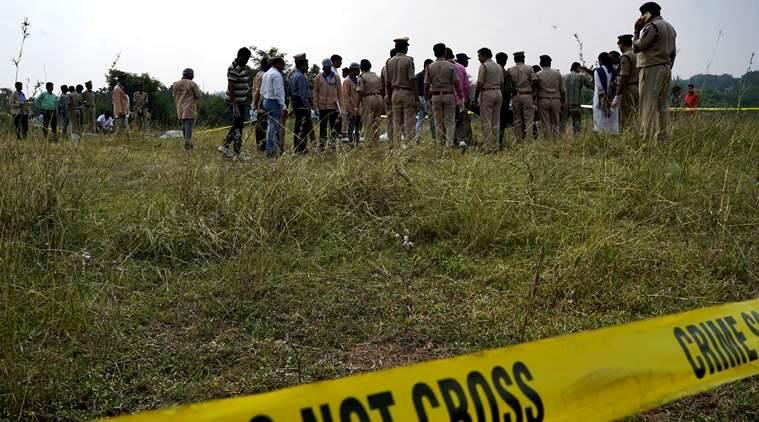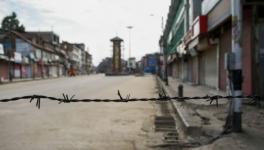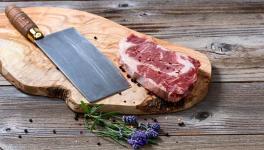Hyd Encounter: Why Police Cannot Give Itself a Clean Chit

Image for representational use only.Image Courtesy : The Indian Express
The gruesome rape and murder of a woman in Hyderabad has revived the debate about women’s safety. People hit the streets in protest, demanding justice for the woman and questioning the system of policing across the country. Within a day, the police arrested the accused, and on the intervening night of 5 and 6 December, at around 3 AM, it shot them dead, and claimed it was an “encounter”.
The police version is that the accused were taken to the spot where crime took place in order to reconstruct how it took place, when the accused tried to escape from custody. The killing has got mixed responses from the public, with a great number hailing the modus operandi of the policemen and rejoicing at this form of justice. Some have questioned the shooting, calling it a murder in cold blood. The police’s methods have raised serious question about the human rights of accused persons, the impunity of police officials in fake encounters and the mysterious encounter in this case.
First of all, the rules require that all the accused would have to be handcuffed and taken out of lockup with adequate guards. How, then, were all four able to escape the custody of police at the same instant? If they were not handcuffed, then the blame would like with the police and questions about this must be posed to them. The second question is why the police chose to reconstruct the crime at 3 AM? In cases of encounters, where the accused persons were unarmed, how can the police justify their murder? What we still do not know is how far these men ran before they were fired upon. There is a very scant possibility that they would have run so far as to leave no choice but to be killed.
Even if we assume that the men ran a distance, this raises questions on the police as to what were they doing while the prisoners attempted their getaway? Third, again assuming that the accused tried to flee, it is settled law that in such cases the escorting policeman is permitted by law to use a firearm, but only to target the lower part of the body to immobilise them, to prevent them from absconding and not kill them.
The police, except in exercise of self-defense, cannot kill people in the name of “encounters”. Section 46(3) of the Code of Criminal Procedure (CrPC), enacted in 1973, gives the police the power to arrest a person, but it does not empower it to cause death if the offence alleged against him or her is not punishable with death or life imprisonment. However, if a death does occur, the court would examine the facts during trial—the police cannot decide for itself.
Clearly, in the present case, even if the narrative of the police is presumed to be accurate, there was no justification to open fire in a manner which led to the death of the accused.
These facts and circumstances make it incumbent upon the state government to book all the police official involved in this “encounter”. In People’s Union for Civil Liberties vs State of Maharashtra the Supreme Court laid down 16 firm guidelines that must be followed during the investigation of police encounters which lead to deaths. These are the standard procedures set up to ensure a thorough, effective and independent investigation. The important guidelines are that an FIR must be registered and forwarded to the court under Section 157 of the Code without delay. While forwarding the report, the procedure prescribed under Section 158 of the Code is to be followed. There would have to be an independent investigation into the incident/encounter by the CID or police team from another police station, under the supervision of a senior officer (at least one level above the head of the police party engaged in the encounter).
Third, a magisterial inquiry must invariably be held in all cases of death in the course of police firing, under Section 176 of the Code. The report of this inquiry is to be sent to a judicial magistrate having jurisdiction under Section 190 of the Code. Fourth, it should be ensured that there is no delay in sending FIRs, diary entries, panchnamas, sketches, and so on, to the concerned court. Fifth, there is to be no out-of-turn promotion or instant gallantry rewards for the officers concerned soon after the occurrence. The Supreme Court also said that it must be ensured at all costs that such rewards are given or recommended only when the gallantry of the concerned officers is established beyond doubt.
It is high time India started talking about the police reform that have been pending for decades. Considering no one is questioning the role of law enforcement agencies and mechanisms in India, the question is, what else but reform can ensure that public faith in justice system does not wither away? The existing police system suffers from myriad deficiencies. From problems relating to police organisation, infrastructure and environment, to obsolete weaponry and intelligence-gathering techniques; to shortage of manpower and corruption, the country’s police force is not in good shape.
The existing police infrastructure is also inadequate to cater to the needs of the police force. There is a huge manpower shortage in police departments across the country. The result is overburdened police staff, a grave challenge for the force. Excessive work burdens do not just reduce the effectiveness and efficiency of police personnel but also leads to psychological distress, which contributes to various crimes committed by policemen.
In 2006, the Supreme Court also delivered the landmark Prakash Singh ruling, in which seven-point directives were issued to the Center and state governments. However, till date, this order has not been implemented. This reflects just how badly India lacks the political will to improve the police force and how adamant the bureaucracy is against implementing this order.
Just as the cold-blooded rape and murder of the victim in Hyderabad chills us to the bone, we must dread the killing, in mysterious circumstances, of the accused by the police. The uncritical endorsement of “encounters” is frightening, considering the impunity with which the Uttar Pradesh Police created an alarming situation in 2018. That year, on average, almost four encounters were reported every day in the state. Despite strong criticism by the National Human Rights Commission against open misuse of police power using the semi-undeclared endorsement from the state government.
Citizens must be critical of the hyper-nationalist narrative that is pushing us to be indifferent towards the means by which the ends of national security are achieved.
Prannv Dhawan and Bhaskar Kumar are students of NLSIU Bengaluru. Dhawan is the founding editor of the Law School Policy Review.
Get the latest reports & analysis with people's perspective on Protests, movements & deep analytical videos, discussions of the current affairs in your Telegram app. Subscribe to NewsClick's Telegram channel & get Real-Time updates on stories, as they get published on our website.
























